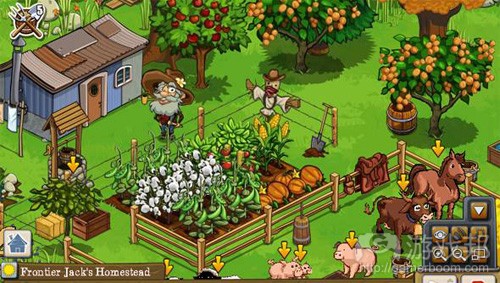列举6种常见的社交游戏机制特点
作者:Karl
初创公司经常讨论游戏机制,并将它们运用于各种业务和创造性行为中。长久以来,游戏机制都是互联网的部分内容,Amy Jo Kim在其著名演讲“Putting the Fun in Functional”中也提到了它们在社交网络中的使用。
在多数情况下,游戏机制都有一定的规则,做X会发生Y,或者说做完X或许会发生Y(游戏邦注:即奖励安排和动作条件)。对我而言,社交游戏中显现的许多游戏机制属于社交游戏机制,这些机制更仰赖于其他玩家的行为而不是规则。理解社交游戏机制未来将相当重要,尤其是当你想制作出一款有着积极结果的持续性游戏。SCVNGR近期提供了各种社交游戏机制,Adrian Chan对此发表评论称这些机制并不真正具有社交性。
社交游戏机制描述了玩家行为和长期结果间的新兴动态关系。或许社交游戏机制正是构成metagame(游戏邦注:即许多复杂游戏中的高层次战略)的机制。社交游戏机制通常并不显露,而且是通过分享游戏过程来构建,因而如果没有深入社交系统便很难察觉。这也意味着他们存在于许多社交网络之中,有可能与网络的目标相悖。
以下是某些社交游戏机制:
战略:玩家寻找方法在场景中获得胜利。社交系统中的场景胜利通常以社群的形式显示出来,因为只有社群才能体现出价值。
竞争:为玩家提供相对反馈的系统。
合作:共享任务、目标、道具和团队。
帮助:一种更为利他的合作形式。就像学校中的老生教新生如何快速提高。
赠礼和交易:在玩家间交易的东西。
可见动作:玩家做出的可被其他玩家察觉到的动作。
游戏邦注:原文发稿于2010年12月9日,所涉时间、事件和数据均以此为准。(本文为游戏邦/gamerboom.com编译,如需转载请联系:游戏邦)
Game Mechanics and Social Game Mechanics
Karl
There is a great deal of conversation in the business and startup world about Game Mechanics and applying them to various business and creative endeavors. Game mechanics have been part of the internet for a long time and the use of them in social networks has been well documented by Amy Jo Kim in her great presentation Putting the Fun in Functional. There’s of course a great deal of thought leadership from the game design community as well including this great presentation Design Outside the Box by @jesseschell.
Game mechanics in most cases are based upon rules, do x and y happens, or more tantalizingly do x and y might happen (see reward schedules and operant conditioning). It occurred to me that many of the game mechanics in what are emerging as social games are social game mechanics, in that they are not emerging from rules as much as emerging from other players behavior. It’s going to be pretty important in the future to understand how social game mechanics shape emerging games especially if you want to create a sustainable game that creates positive outcomes. SCVNGR recently created what they call a social play deck with various game mechanics described, Adrian Chan provides a pretty thorough critique of the deck concluding that it’s not very social.
Social game mechanics describe the emerging dynamics between players that shape behavior and outcomes over the long run. It may be that social game mechanics are the mechanics that make up the metagame (I particularly like the urban dictionary definition of this as “The highest level of strategy in many complex games”). Social game mechanics are often tacit and built through shared game play so can be hard to identify if you’re not immersed in the social system. It also means they exist in many social networks and can often work against the goals of the organization running the network.
Some examples of social game mechanics would be:
Strategies: The player formulated path to a “win” scenario. Win scenarios in social systems often emerge from community norms by what is valued by the community. There also might not be a win scenario
Competition: systems that provide comparative feedback to players
Co-operation: shared tasks, goals, items, teams
Helping: a more altruistic form of co-operation. Like an old school quake player showing a newbie how to rocket jump.
Gifts and exchanges: things that are exchanged between players
Visible actions: hard to quantify this one, but any action taken by a player that can be observed by other participants
That’s just a strawman so please add any additional thoughts or feedback. Thanks. (Source: Experience Curve)








































 闽公网安备35020302001549号
闽公网安备35020302001549号